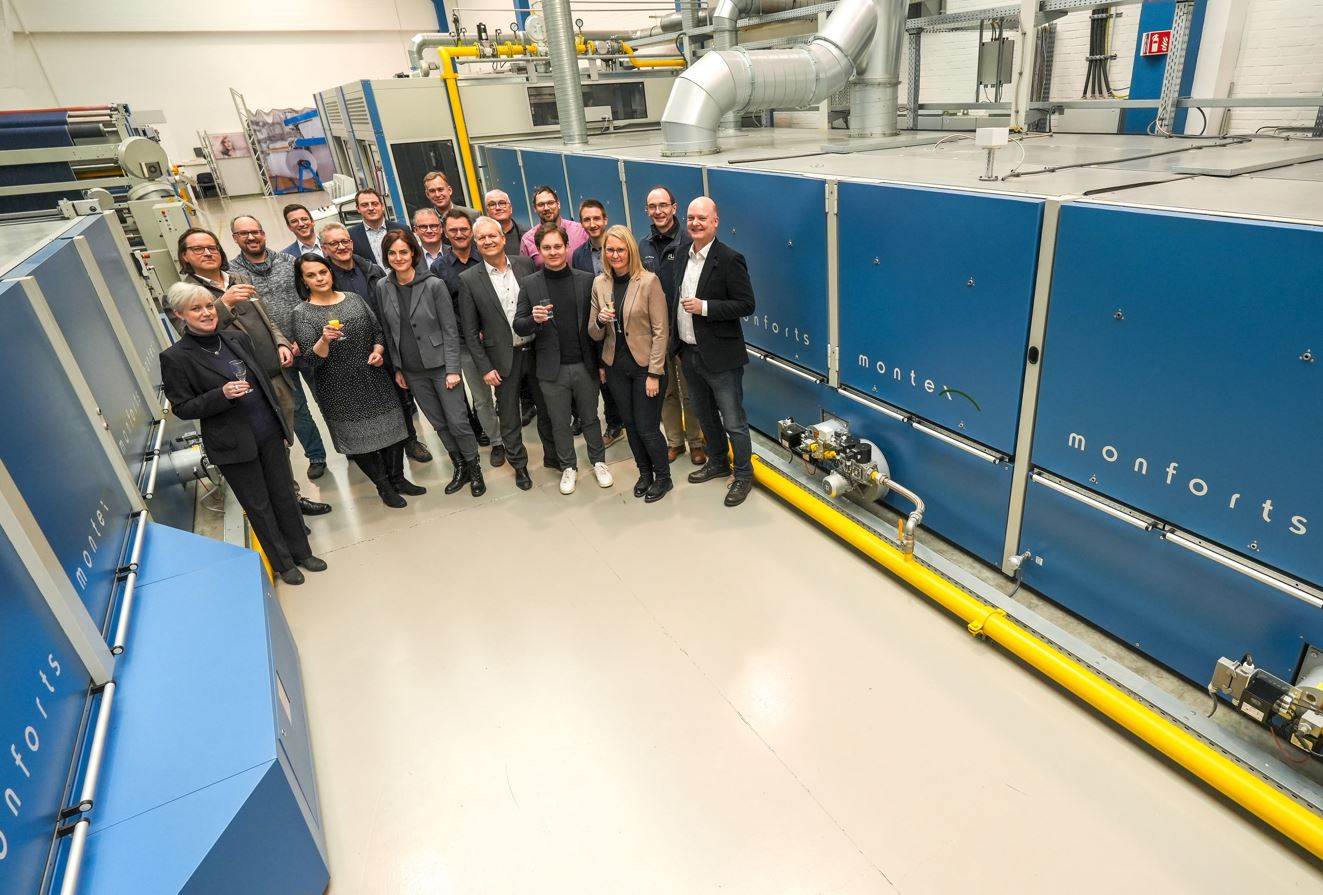Partners explore green hydrogen to power textile finishing
25/04/2023

Monforts is leading a consortium of industrial partners and universities in the three-year WasserSTOFF project, launched in November 2022, that is exploring this new industrial energy option.
The target of the German government-funded project is to establish to what extent hydrogen can be used as an alternative heating source for textile finishing processes. This will first involve tests on laboratory equipment together with associated partners and the results will then be transferred to a stenter frame at the Monforts Advanced Technology Center (ATC).
“Everybody knows that textile finishing is a high energy consuming process,” said Monforts managing director Gunnar Meyer.”To make this process more efficient, Monforts already offers several solutions, but as a technology leader we are also rising to the challenge of exploring alternative heating options to be ready for the future.”
To be considered “green”, hydrogen must be produced using a zero-carbon process that is powered by renewable energy sources such as wind or solar. Currently, the cleanest method of hydrogen production is electrolysis, using an electrically-powered electrolyzer to separate water molecules into hydrogen and oxygen. The purity of the hydrogen is also important, and impurities must be removed via a separation process.
“Despite all its advantages, there are obstacles to overcome on the way to widespread, economically-feasible green hydrogen use,” explains Monforts textile technologies engineer Jonas Beisel. “Until there are widely available, reliable and economical sources of this clean power, the cost of producing it will remain prohibitive. The infrastructure is not yet there, and hydrogen also has a tendency to make steel brittle and subject to fracture, which is something that requires further investigation in both its transportation and use in industrial processing.
“Green energy’s potential as a clean fuel source is tremendous, but there is much we need to explore when considering its use in the textile finishing processes.”
At its Advanced Technology Center (ATC) in Mönchengladbach, Monforts will be carrying out intensive tests and trials to assess the reliability of both processes and final products when different natural gas and hydrogen mixtures – up to 100% green hydrogen – are employed. The results will be closely analysed by the consortium partners because there are many parameters that at this stage remain unknown.
The aim, Beisel adds, is to both reduce CO2 emissions and – following the rising prices and industry turbulence experienced by manufacturers over the past year or so – to further reduce a dependency on natural gas.
The three-year WasserSTOFF project is sponsored by Germany’s Federal Ministry for Economic Affairs and Climate Action, and with Monforts at the helm brings together industrial partners Pleva and NTB Nova Textil, with academic input from the Hochschule Niederrhein and the Technical University of Freiberg.
The seminars will take place at Monfort’s stand on June 9 and June 12 at 11am.
Photo: Members and associates of the WasserSTOFF consortium from Monforts, Pleva, NTB Nova Textil, TU Freiberg, Hochschule Niederrhein and Honeywell Thermal Solutions, at the launch meeting of the new project at the Monforts ATC in Mönchengladbach.






